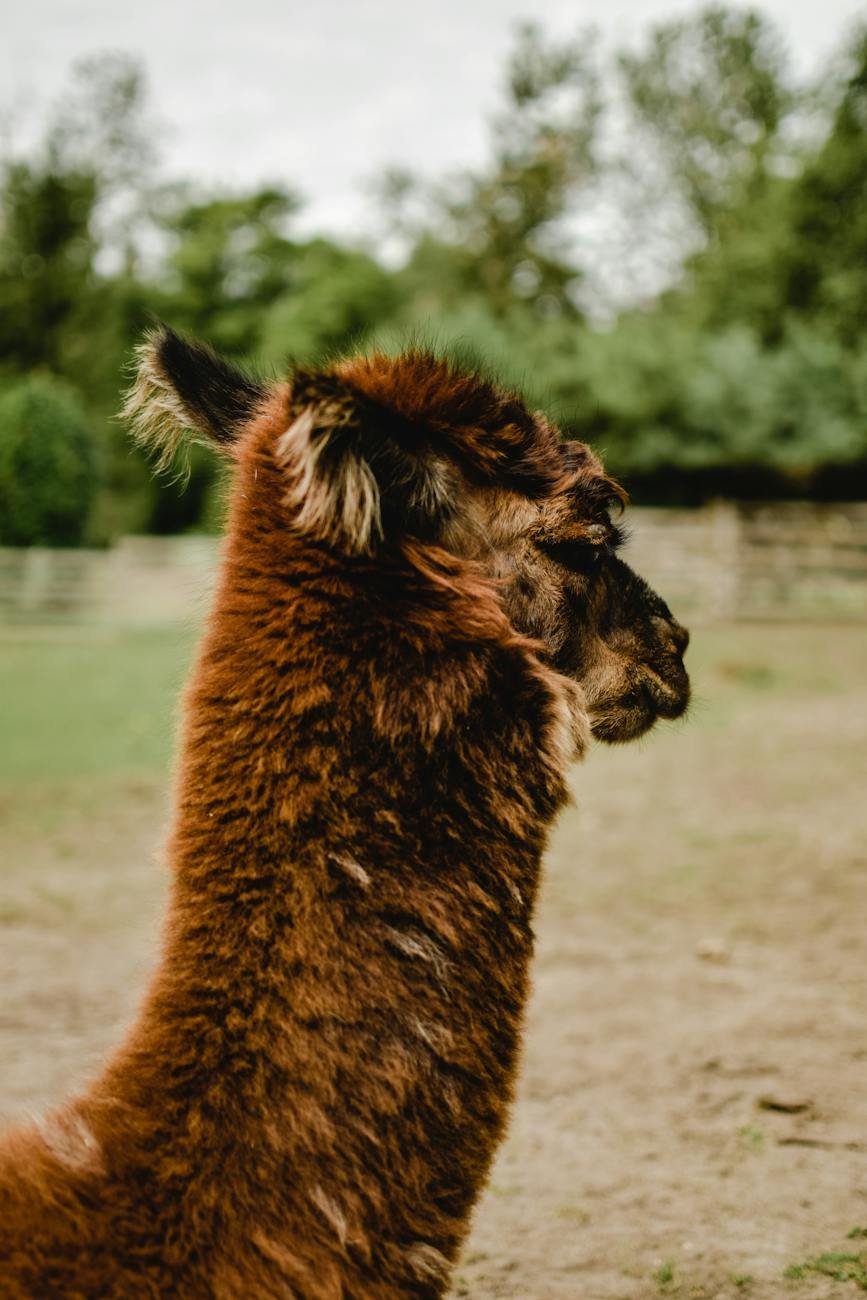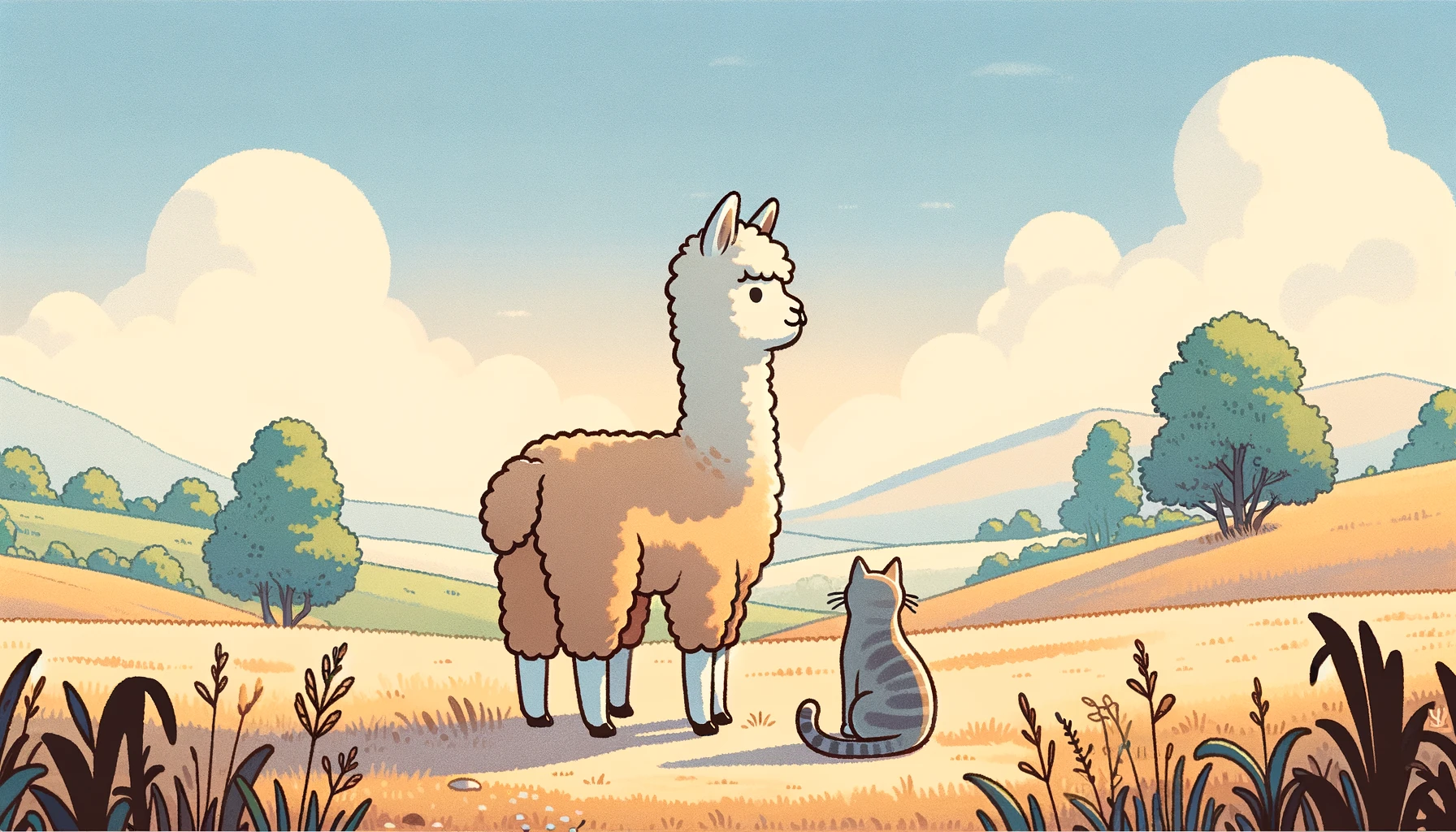How to Introduce Cats to Alpacas the Right Way
Ever wondered if your fluffy feline could mingle with an alpaca? It’s a question that’s been on many pet owners’ minds. Alpacas, with their gentle and curious nature, are known to be sociable creatures. But how do they fare with cats?
Cats, on the other hand, are independent and territorial. Will they get along with an alpaca that’s wandered into their space? It’s a fascinating topic, and one that requires a deep dive to fully understand. Let’s explore the dynamics between these two very different animals.
Key Takeaways
- Alpacas are social animals that thrive in groups and are generally non-territorial, while cats are known for being independent, territorial, and potentially adaptable to other species.
- Despite the contrasting social characteristics of the two species, determining their compatibility requires understanding the individual temperaments and past experiences of each animal.
- Alpaca-cat interactions depend greatly on factors such as individual temperament, early exposure to different species, the environment they coexist in, and the method of introduction.
- Introducing an alpaca and a cat effectively requires a gradual process of scent swapping, controlled interaction using a physical barrier, followed by direct interaction when both animals seem comfortable.
- The best practices for establishing a harmonious cat-alpaca relationship include familiarizing them with each other’s scent, gradually introducing visual contact, keeping their environment controlled, and allowing them to interact at their own pace.
- Introducing a cat to an alpaca requires patience, keen observation, and flexibility due to their different nature, respecting individual boundaries is key to prevent conflict and maintain peace.
What are alpacas and cats like?
When we’re drawing comparisons, it’s necessary first to dig a bit into their characteristic traits. So let’s set the stage by understanding a bit more about alpacas and cats in their independent states.


Alpacas, unlike many other farm animals, are quite sociable. They’re typically quiet, gentle and they thrive in groups. As a herd animal, they’ve been bred for social interaction and tend to get along well with others. These animals are known for their calm disposition and relaxed attitude. They’re not territorial and tend to be more interested in peace than power.
On the flip side, cats are famously independent. They’re curious creatures by nature but are also instinctively territorial. Even if they’re affectionate towards their human families, that doesn’t always extend to other animals. Cats value their space and aren’t known to willingly share their territory with others, especially those from different species.
As we can see, alpacas and cats are fundamentally different in many ways, which can make their interaction quite fascinating. It’s critical to keep in mind that the inherent independence and territorial nature of cats might clash with the easy-going and sociable temperament of alpacas. But what happens when these two species meet in real life? That’s an interesting area we should explore further. While the outcome isn’t predictable, understanding these two diverse personalities can offer us some hints. Bear in mind, though, there’s more to this conversation about whether cats and alpacas can genuinely get along. So, let’s delve deeper into this topic in the following sections.
Alpacas and cats – a sociability comparison
As we dive deeper into this topic, we’ll take a closer look at the social behavior of the two animals—alpacas and cats. It’s important to understand their sociability dynamics as it’s a key factor in determining whether they can coexist.

Firstly, let’s take a quick review of alpacas. These creatures are notoriously social. In fact, you seldom find alpacas living alone. Their pack-oriented nature is so deeply ingrained that an alpaca in solitude will often result in harmful stress levels, manifesting itself through symptoms such as unusual behavior and decreased appetite.
I believe it’s essential to appreciate that their herd mentality isn’t simply about being companions; it’s the foundation of their survival instincts. Flocking together means safety in numbers from possible danger. So, the idea of introducing a new creature to an alpaca’s space must be done delicately to ensure their comfort and stress levels are managed.
On the other hand, cats are more complex when it comes to socialization. They’re known for their independent nature and can be quite territorial. Yet, this doesn’t mean that cats are always lone creatures. They are adaptable and can usually navigate social situations with other animals given time.
Here’s a simplified comparison of the sociability traits between alpacas and cats:
| Alpacas | Cats | |
|---|---|---|
| Pack-Oriented | Yes | No |
| Needs Companions | Yes | No |
| Territorial | No | Yes |
Despite the seemingly opposing social characteristics of alpacas and cats, it’s not necessarily a conclusive indication of their compatibility. This comparison alone doesn’t ascertain whether they can live together harmoniously or not, but it provides essential information on how these animals operate socially. I’ll continue delving further into specific factors that may influence the interaction between cats and alpacas in subsequent sections.
Factors that influence alpaca-cat interactions
Diving right into the influencing factors for this unique duo, it becomes evident that alpaca-cat interactions largely depend on several factors. Let’s dissect them for a clearer understanding.

Firstly, individual temperament plays a vital role. Not all alpacas and cats behave the same way. Each has its own personality. Some are introverted, some extroverted, others are somewhere in between. Therefore, even a typically sociable alpaca may be less inclined to interact if it’s shy, while an unusually friendly cat may get along better with alpacas than its more curry cohorts.
Next, let’s talk about early exposure to different species. Animals imprint on those around them when they’re young. Alpacas that experienced positive interactions with various animals at a young age may be more accepting. Similarly, cats that were socialized properly during their formative months can be more open to interspecies friendships.
Thirdly, the environment they’re in can also weigh heavily on the success of their interactions. Cats and alpacas that have ample space to coexist, places to hide and retreat when they want their alone time, are more likely to get along.
Finally, consider the introduction method. Proper introduction of a cat to an alpaca (or vice versa) is key – never force them into proximity. Allow them to explore each other’s presence at their own pace. Rushed introductions could potentially lead to stressful experiences, which might discourage them from further attempts at interaction.
Introducing an alpaca to a cat
Now that we’ve taken a closer look at the social dynamics and behavioral traits of alpacas and cats, it’s time to consider the practical aspect of introducing an alpaca to a cat. As with any new interaction, the process should be gradual and respectful of each animal’s comfort zone.
When introducing an alpaca and a cat for the first time, it’s recommended to start with scent swapping. This method allows each animal to become familiar with the other’s scent without the pressure of a physical encounter. You could do this by providing the cat with a blanket the alpaca sleeps on or vice versa.
Next, consider the use of a secure physical barrier. A fence between the cat and alpaca can provide safety while also allowing visual and nose-to-nose contact. Always remember, the animal’s comfort and safety come first. Never rush this process.
If both animals appear to be comfortable, it may be time for a direct, supervised interaction. Keep this initial meeting short and observe their behavior closely.
Importantly, always be aware of each animal’s individual temperament. Just as people have their unique ways of adapting to new situations, cats and alpacas also have their varying comfort levels when it comes to introducing new species.
Let’s take a quick look at some of these steps in detail:
- Scent swapping: Exchange bedding or blankets between the two animals to acclimate them to each other’s scent.
- Use of physical barrier: Implement a secure fence in the beginning stages to allow controlled interaction.
- Direct interaction: Allow supervised, direct contact when both animals appear comfortable.
Early exposure to other species can be beneficial for both alpacas and cats, just remember to be patient and understand that each animal’s personality can greatly influence their adaptability.
Tips for creating a harmonious alpaca-cat relationship
When people ask me, how can I make my cat and alpaca get along? – there’s no one-size-fits-all answer. Since both animals have unique temperaments and behavior patterns, it’s critical to approach this task with patience and understanding.
Firstly, it’s a good idea to let both animals become accustomed to each other’s scent. You can start by scent swapping – rubbing a cloth on one animal and leaving it for the other to sniff. This will not only pique their curiosity but also minimize fear or surprise when they eventually meet.
Gradually introduce visual contact after they’ve become familiar with each other’s scent. It’s important to ensure both animals are comfortable and at secure distance. Progress to full exposure only when both the cat and alpaca seem relaxed and curious – not scared.
During the introduction period, it’s noteworthy to pay attention to their environment. In an open field, an alpaca might try to lead or herd a cat, which could startle the feline. On the other hand, in a confined space, a cat might feel trapped and become aggressive.
Below is a brief outline of the introduction process:
- Familiarize them with each other’s scent
- Gradually introduce visual contact
- Keep the environment controlled during their initial meetings
- Let them interact at their own pace
- Progress to full exposure when both seem comfortable
During this time, it’s crucial to monitor their behavior and be ready for setbacks. While some cats and alpacas may form a strong bond, others may merely tolerate each other’s presence. Respecting their individual boundaries is key to maintain peace. Patience, keen observation, and flexibility are attributes you’ll need during this introduction process.
Remember, introducing a cat to an alpaca is more of a marathon and not a sprint. Take it slow, understand their moods, and soon you might find these unlikely friends forming a unique bond.








Our picks
Alpaca & Wool Felted Sole Inserts: Comfy Upgrade?
Best Alpaca Socks for Hiking: Ultimate Comfort and Durability on Trails
Best Alpaca Halter for Comfort and Control